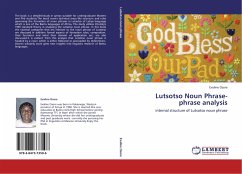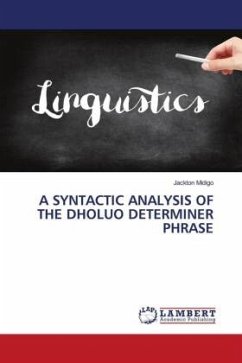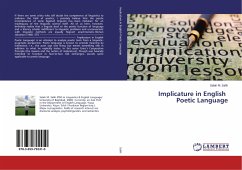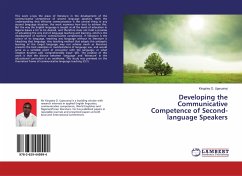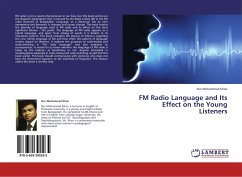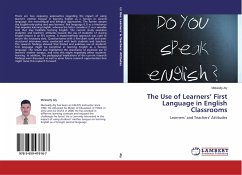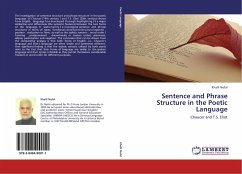
Sentence and Phrase Structure in the Poetic Language
Chaucer and T.S. Eliot
Versandkostenfrei!
Versandfertig in 6-10 Tagen
39,99 €
inkl. MwSt.

PAYBACK Punkte
20 °P sammeln!
The investigation of sentence structure and phrase structure in the poetic language of Chaucer (14th century ) and T.S. Eliot (20th century) shows how English language has developed through highlighting the major similarities and differences (the syntactic features) between the two forms of the language. It seeks mainly to investigate sentence and phrase structures in terms of types, functional constituent (structural aspects) , position , realization or form, as well as the stylistic variants : word order ( fronting , postponement , discontinuity or broken order), pleonasm, ellipsis, passiviz...
The investigation of sentence structure and phrase structure in the poetic language of Chaucer (14th century ) and T.S. Eliot (20th century) shows how English language has developed through highlighting the major similarities and differences (the syntactic features) between the two forms of the language. It seeks mainly to investigate sentence and phrase structures in terms of types, functional constituent (structural aspects) , position , realization or form, as well as the stylistic variants : word order ( fronting , postponement , discontinuity or broken order), pleonasm, ellipsis, passivization and negation. The conclusion that can be drawn from the comparative analysis is that both forms of English, i.e., Chaucer s language and Eliot s language are often similar and sometimes different. One significant finding is that the stylistic variants utilized by both poets refer to the fact that their forms of language are similar to the spoken language and their syntax is flexible asthey permit themselves considerable freedom in word order for different purposes.



